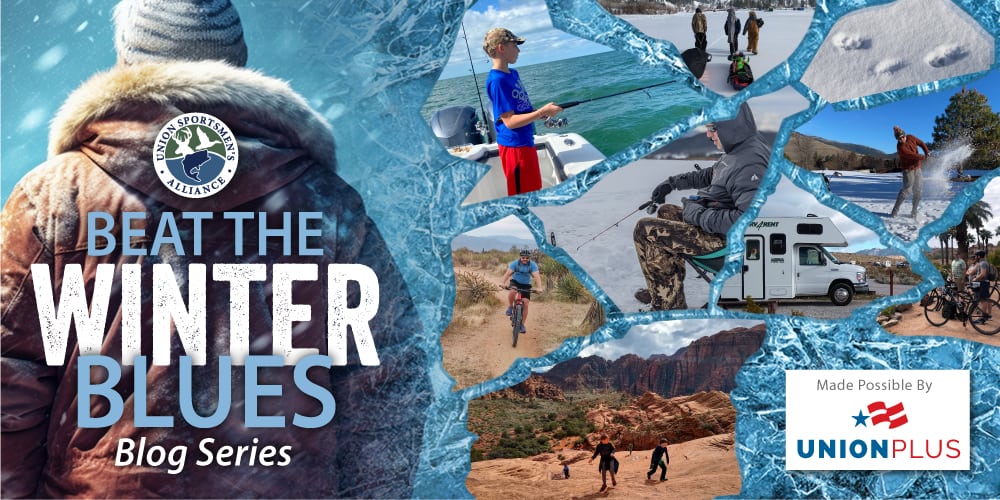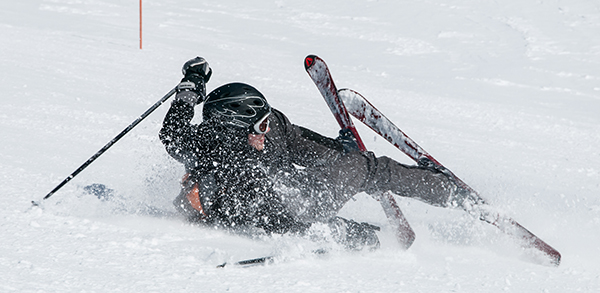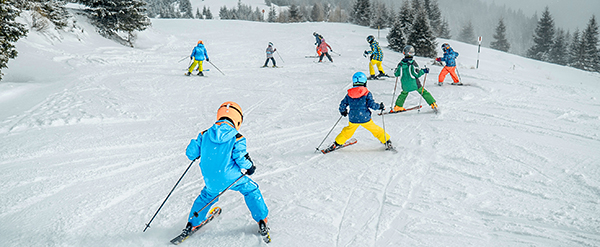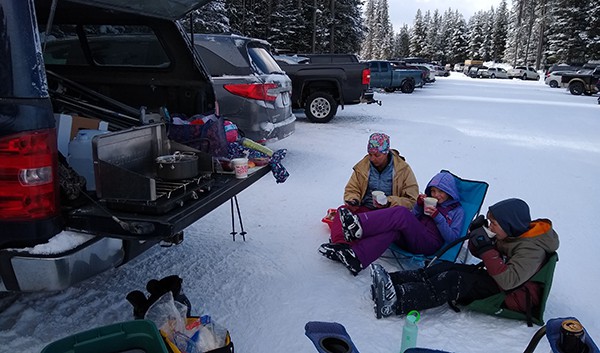
Do You Really Want to Go Skiing?
By PJ DelHomme
Do not read this article if you’re one of the roughly 14 million Americans who already ski or snowboard. These words are for those souls thinking about going skiing. I’m here to give you some honest, very cold-hearted advice.
I was born and raised in L.A, lower Alabama, that is. I don’t ever remember it snowing there. In contrast, it does snow in Montana. When I moved there at 18, I worked at a ski resort one winter. I bought a discounted pass and all the gear and signed up for a lesson. When the instructor canceled, I convinced myself it didn’t look that hard.
Once I pointed the skis downhill, there was nothing left but prayer and gravity. It did not go well. I slid, screamed, and cursed my way to the bottom and back to my dorm room. I sold all my gear at a deep discount and licked my wounds the rest of the season at the employee bar.

Bad day attempting to ski.
Eventually, I tried downhill skis again. I’m hesitant to say I may have started to enjoy it. Then, I had kids, which added another dimension to an already sadistic pastime.
Consider the rest of this story as a public service announcement to my fellow humans. If you insist on learning to ski or taking the family skiing, think really hard about what you hope to get out of the experience. Of course, you could just take the cash and do something else this winter, like spend it on a vacation somewhere sunny. But if you go, here are a few tips to survive your next ski vacation.
Cost
The resort I worked is called Big Sky, and it cost about $60 for a lift ticket 20 years ago. A ticket today will cost you, on average, $200. Multiply that by members of your family, and that’s the cost of admission every single day. This doesn’t include gear rental, lodging, food, and clothes—though you can certainly ski in your Carhart coveralls. There are cheaper places to ski, though the lifts are old and slow (more on that in a minute), and the ski hills are in the middle of nowhere, meaning you’ll need a four-wheel drive and plenty of extra time.
Lifts
 I hate heights. Unfortunately, you can’t ski without lifts, and that involves being scooped up and whisked away to nauseating heights. To temper that fear, though, some places have gone to great lengths to make their lifts less fear-inducing. Others, not so much. The lesson here is you get what you pay for. Cheaper lift tickets hover around $75 and can be found at the older “mom-and-pop” ski hills. Older lifts are slow and don’t have a bar that goes across your waist to give you some sense of safety. Instead, you can ride for 20 minutes or more over ravines as they sway in the gales. If you are truly unlucky, you will stall over one of those ravines for a few minutes or hours. If lifts break, and sometimes they do, you can only imagine what the rest of your vacation will look like. For around $100, you can ski at a resort like Whitefish Mountain and get whisked up the mountain faster, where a lodge awaits you at the top if you need to warm up. It’s worth the extra $25.
I hate heights. Unfortunately, you can’t ski without lifts, and that involves being scooped up and whisked away to nauseating heights. To temper that fear, though, some places have gone to great lengths to make their lifts less fear-inducing. Others, not so much. The lesson here is you get what you pay for. Cheaper lift tickets hover around $75 and can be found at the older “mom-and-pop” ski hills. Older lifts are slow and don’t have a bar that goes across your waist to give you some sense of safety. Instead, you can ride for 20 minutes or more over ravines as they sway in the gales. If you are truly unlucky, you will stall over one of those ravines for a few minutes or hours. If lifts break, and sometimes they do, you can only imagine what the rest of your vacation will look like. For around $100, you can ski at a resort like Whitefish Mountain and get whisked up the mountain faster, where a lodge awaits you at the top if you need to warm up. It’s worth the extra $25.
Kids and Skis
Kids under seven do great learning how to ski. Maybe it’s because their center of gravity is lower, or maybe it’s because they are mainly still made of cartilage, allowing them to bounce back after a nasty spill. If I haven’t talked you out of a family ski vacation and you still want to bring your little ones, please put them in lessons and consider it active childcare. There will be tears, but that is nothing if you think you will teach them yourself.

Getting the kids ski lessons is well-worth the cost!
The Food
If you’ve dined on airline food lately, then you’ll love what the ski lodge has to offer. The kids only want fries and chicken tenders, so buy them what they want. If there’s a chili bread bowl option, go for it, though you will likely feel it hit on the last run of the day. Avoid eating in the lodge at lunchtime because everyone is eating lunch. In my experience, the slopes are less crowded at lunchtime. Eat early or late and take advantage of fewer people on the hill. A better, less costly option is to head back to the parking lot for an old-fashioned tailgate. Cook up brats, boil water for Cup O’Noodles, have an ice-cold Coors, and bust out the lawn chairs. We bring a little propane space heater if it’s colder than 15 degrees.

A tailgate lunch is a much cheaper alternative to ski resort food.
The Cold
My favorite time to ski is in March when the days can be warm and sunny, and the snow is slushy. I’m fine with skiing in a T-shirt. That only comes around once every season. Most of the time, the temperature will hover around freezing. At this temp, it’s all about survival. Think about how you dress when ice fishing—staying warm while skiing means donning numerous layers, not just one thick coat or pair of pants. Buy air-activated hand and feet warmers in bulk and use them! Wear a face mask and balaclava. Use mittens with a warm inner layer and a waterproof shell outer layer. Come inside to warm up as often as needed, and stay fueled with warm noodles, cocoa, or maybe a toddy.
Redemption?
Even with the cold, the kids, the crowds, the lifts, and the cost, some moments almost make it all worth it. It might be when your 12-year-old finally gets the hang of skiing and can keep up with the rest of the family. Or when your 14-year-old goes off to ski with a friend and only finds you at lunch because they don’t have any cash. It’s that white-knuckle drive home punctuated with laughter as you listen to your kids, spouse, or friends talk to each other about the day, everyone red-faced with terrible goggle tans. Twenty minutes later, it’s the wonderful silence of everyone passed out from sheer exhaustion. Whether you go once or buy a season pass, skiing with friends and family is something you will all remember for a very long time—for better or worse.
PJ DelHomme writes and edits content from his home in western Montana. He runs Crazy Canyon Media and Crazy Canyon Journal.
Related Articles in this Series:



